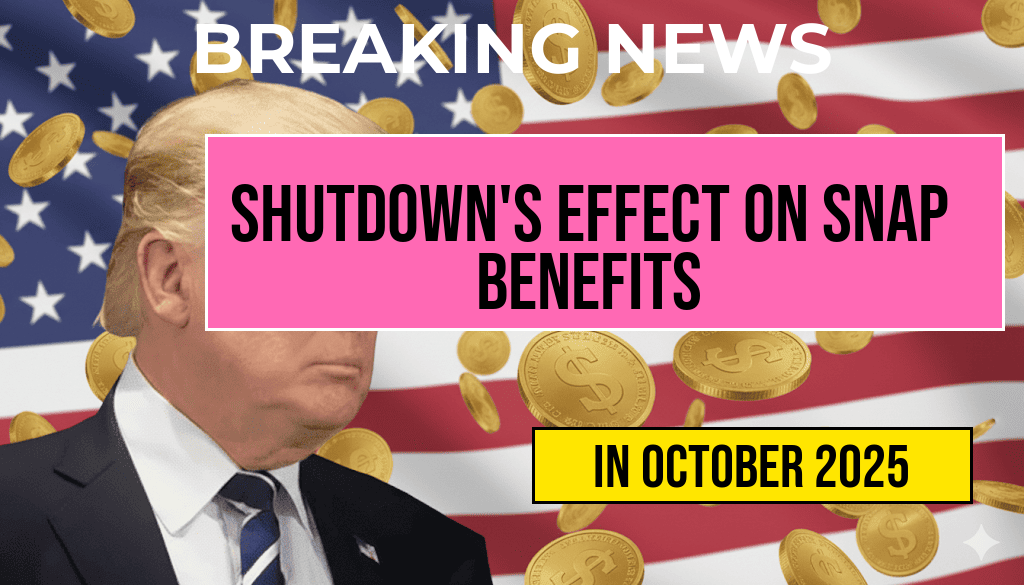The prospect of a government shutdown can have widespread repercussions across various federal programs, with SNAP benefits (Supplemental Nutrition Assistance Program), commonly known as food stamps, being among the most immediately affected. When Congress fails to pass funding legislation, government agencies often face temporary closures or reduced operations, which can disrupt the distribution of essential services. For millions of Americans relying on SNAP assistance, a shutdown risks delaying benefit payments, creating food insecurity, and complicating access to nutrition support. While some benefits are protected by law from interruption, the duration of a shutdown and specific legislative measures can significantly influence the extent of disruptions. Understanding how these shutdowns impact food stamp assistance involves examining federal funding mechanisms, contingency plans, and the potential ripple effects on vulnerable populations.
How a Government Shutdown Affects SNAP Funding and Distribution
Legal Protections and Funding Sources
The SNAP program is primarily funded through federal appropriations approved annually by Congress. Typically, during a shutdown, the program’s operations are maintained through existing funds, allowing benefits to be issued as scheduled. However, if the shutdown extends beyond the availability of these funds, or if Congress fails to allocate emergency funding, disruptions can occur. The SNAP program is designed with certain protections to ensure continued benefit delivery in the short term, but longer delays can jeopardize access for recipients.
Impact on Benefit Issuance
Most food stamp benefits are issued monthly via Electronic Benefit Transfer (EBT) cards. During a government shutdown, the Department of Agriculture, which oversees SNAP, typically continues to process payments as long as funds are available. Nevertheless, administrative delays, staffing shortages, or technical issues can lead to late payments or temporary suspensions in some cases. Recipients may experience difficulties in purchasing food if their benefits are delayed, especially if the shutdown persists into the benefit issuance date.
State-Level Variations and Emergency Measures
| State | Operational Status | Contingency Plans |
|---|---|---|
| California | Continues benefits with federal funds | Uses state reserves for administrative costs |
| Texas | Maintains benefit issuance | Relies on federal funds; may face delays if shutdown prolongs |
| New York | Operational, with some administrative challenges | State agencies prepared for temporary delays |
While most states aim to minimize disruptions, variability in administrative capacity and reserve funds means some areas may experience more significant impacts than others.
Potential Consequences for SNAP Recipients
Food Security Risks
For many households, SNAP benefits constitute a vital part of their monthly food budget. Any delay or reduction can force families to cut back on nutritious food, potentially leading to increased food insecurity and health issues. According to the Feeding America network, food insecurity in the U.S. has been rising, with millions relying on federal assistance programs to meet their basic needs. Disruptions caused by a shutdown could exacerbate these challenges, especially among vulnerable groups such as children, seniors, and individuals with disabilities.
Economic Ripple Effects
Beyond immediate food access, disruptions to SNAP can influence local economies. Retailers and farmers who rely on SNAP transactions may see decreased sales if beneficiaries are unable or unwilling to purchase food during a shutdown. Small businesses operating in grocery sectors could face financial strain, compounding economic instability in affected communities.
Legal and Policy Responses
Congress and federal agencies have sometimes enacted emergency measures or passed legislation to prevent or mitigate disruptions to SNAP during shutdowns. For instance, funding measures may be approved to extend benefits temporarily or to cover administrative costs. Nonetheless, the effectiveness of these responses depends on political negotiations and legislative timelines.
Public Awareness and Preparedness
What Recipients Can Do
- Stay informed about benefit issuance schedules through official state or federal portals.
- Contact local assistance agencies for updates if benefits are delayed or interrupted.
- Plan for potential short-term food purchasing challenges by shopping in advance or exploring community resources.
Community and Federal Support Initiatives
During past shutdowns, community organizations and food banks have played a crucial role in providing emergency assistance. Additionally, federal agencies may implement contingency plans to ensure continued support for vulnerable populations. However, these measures are often temporary and depend on the political climate.
Understanding the nuances of how the government shutdown impacts SNAP benefits emphasizes the importance of proactive planning and awareness. As debates continue in Congress, millions of Americans await clarity on whether their access to essential nutrition assistance will face disruptions. Keeping informed through reliable sources, such as the USDA Food and Nutrition Service, can help recipients navigate uncertain times and access available resources.
Frequently Asked Questions
What is the impact of a government shutdown on SNAP benefits?
During a government shutdown, SNAP benefits may be temporarily disrupted or delayed as federal agencies face funding shortages. However, in many cases, existing benefits are still provided for a limited period, but future distributions could be affected.
Will my food stamp assistance benefits be affected during a shutdown?
In most instances, food stamp assistance benefits continue to be issued during a government shutdown due to ongoing state-level administration. Nevertheless, prolonged shutdowns could lead to delays or uncertainties in benefit distributions.
How can I find out if my SNAP benefits will be affected?
You can stay informed by checking updates from your state’s SNAP office or the official website of the U.S. Department of Agriculture. Local agencies will also provide guidance if there are any changes or disruptions.
Are there any measures in place to protect food assistance beneficiaries during a shutdown?
Yes, federal and state agencies often have contingency plans to ensure food assistance benefits are maintained during a shutdown. However, these measures may not cover extended shutdown periods, which could impact service continuity.
What should I do if I experience a delay in receiving my SNAP benefits?
If you encounter a delay, contact your local SNAP office or food assistance provider for assistance. It’s also advisable to stay updated through official communications and consider emergency resources if necessary.






